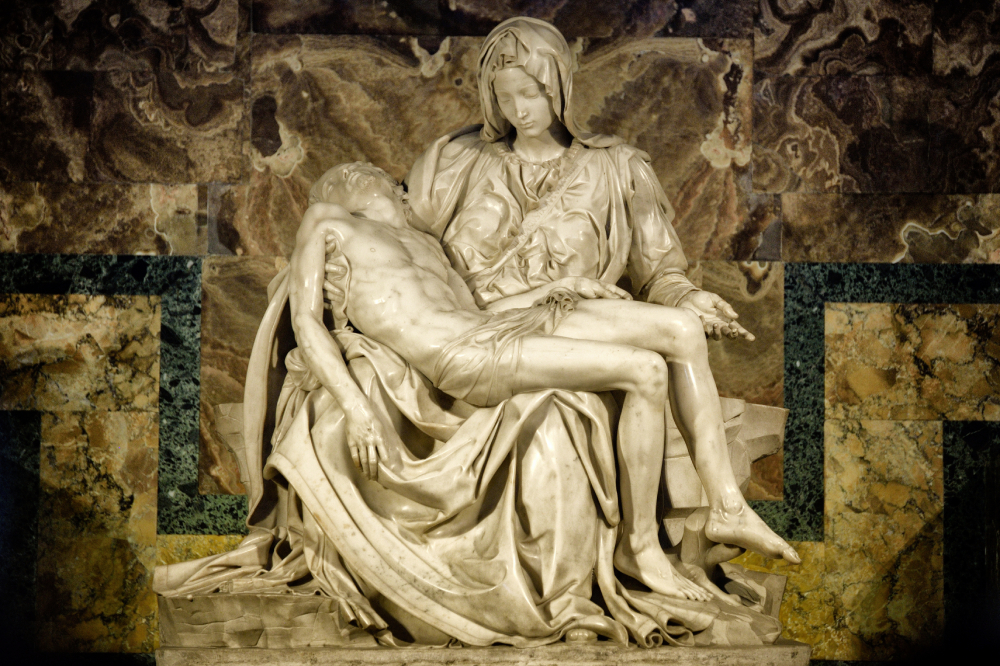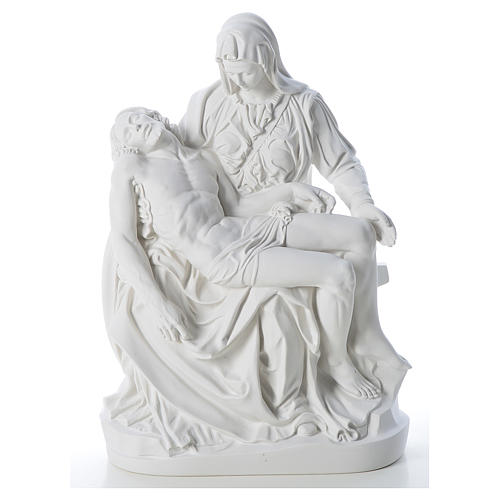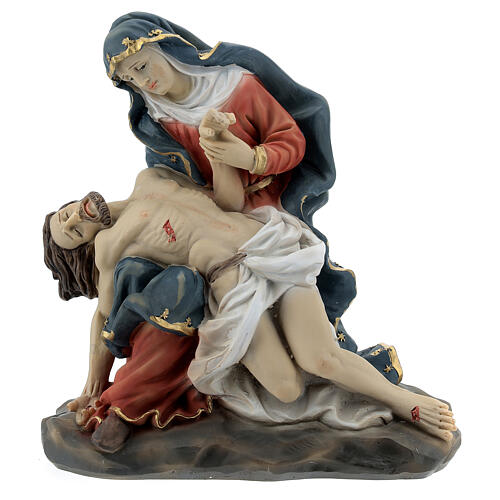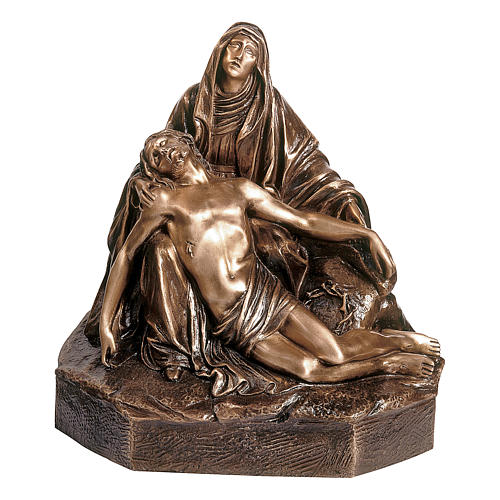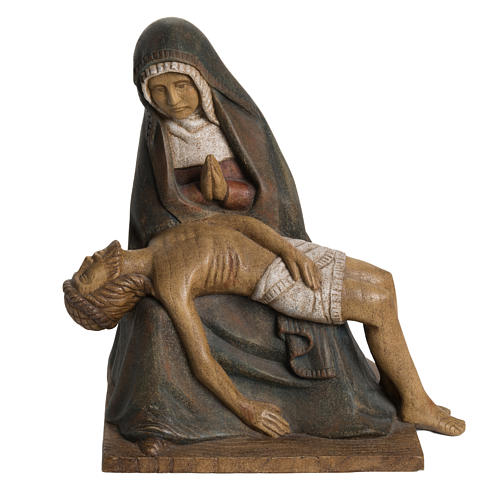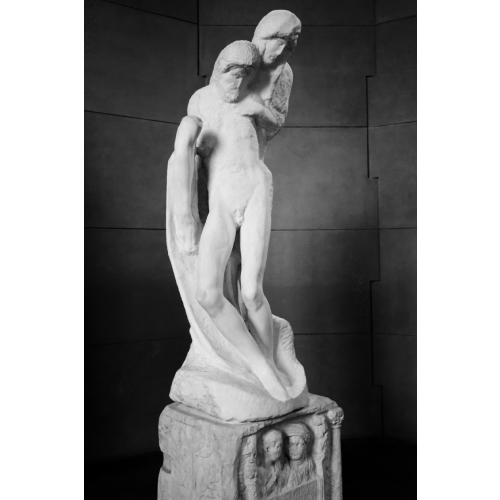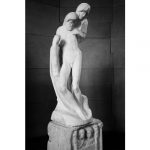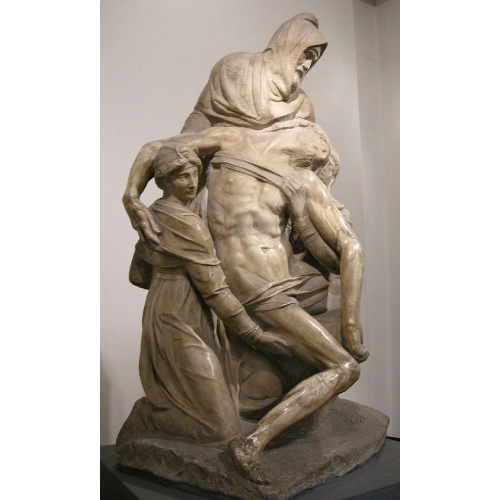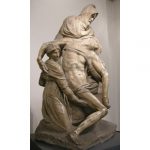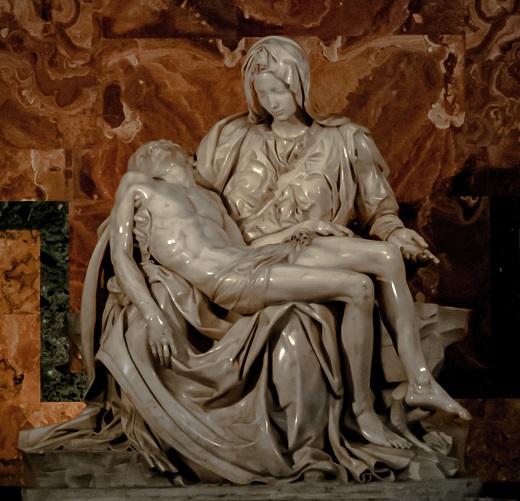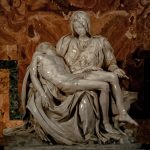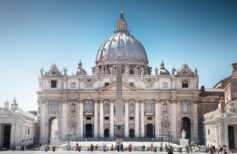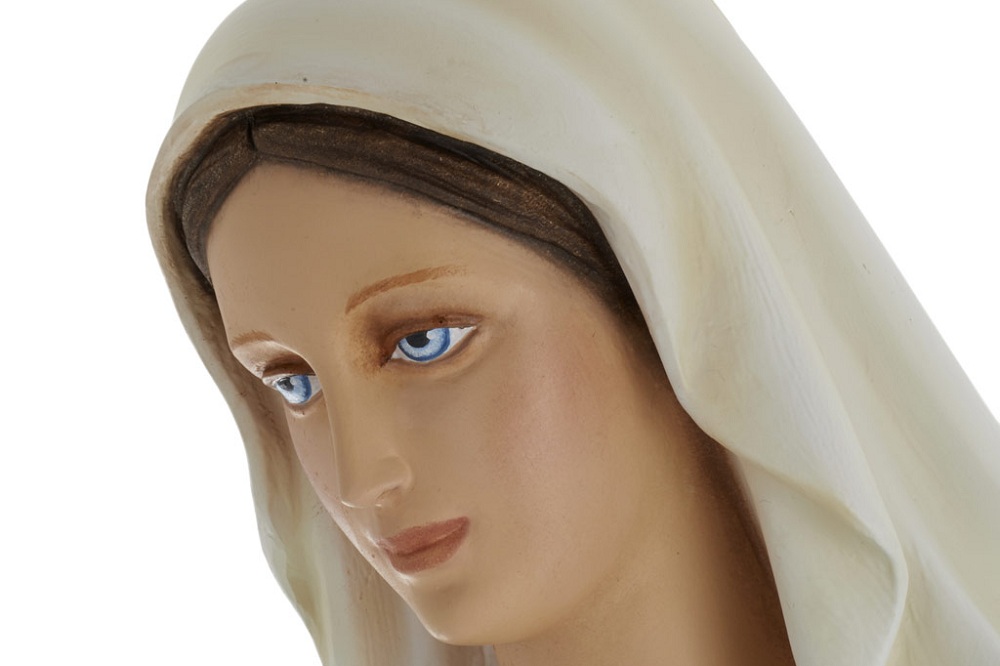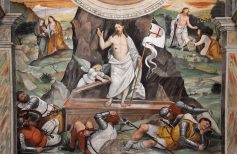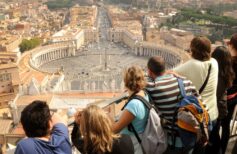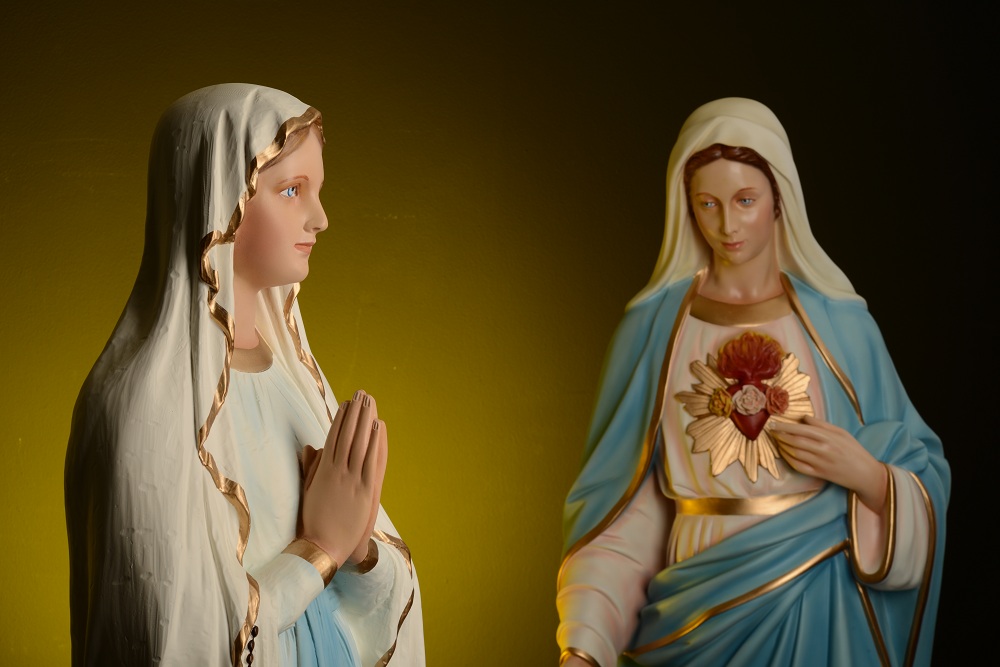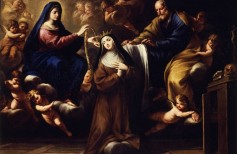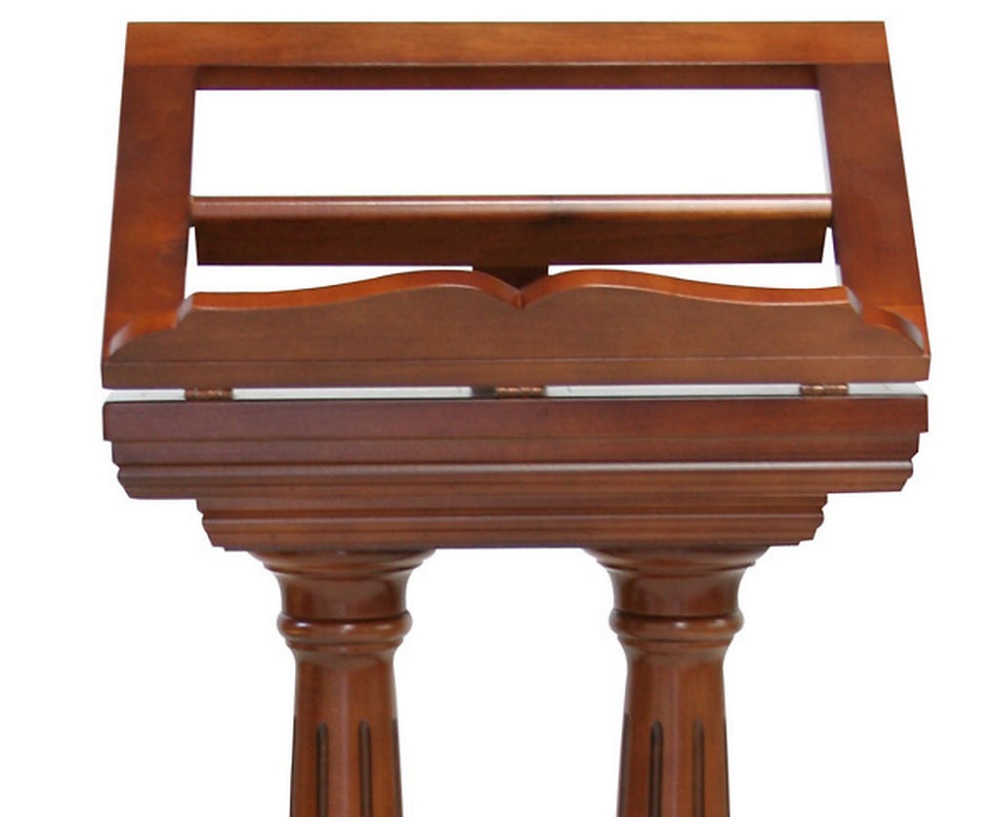Michelangelo Buonarroti’s Pietà is one of the most famous works of art of all time and one of the masterpieces of the Italian Renaissance. Let’s discover the secrets of this wonderful sculpture.
It is difficult to think of a work of art that is as well known as Michelangelo Buonarroti’s Pietà. It belongs to those masterpieces that over the centuries have written the evolution of the history of art and, in some ways, also of human feeling. Regardless of one’s religious beliefs, it is practically impossible to contemplate this sculpture live without feeling deeply touched by it, feeling the awakening of emotions and feelings deeply inherent like any human being. Michelangelo, an absolute genius of our Renaissance, one of the most celebrated artists of all time, has created other wonderful works, from David to the Sistine Chapel, but for some truth, the Pietà is unique, both for the themes it deals with and for its own realisation.

5 must-have sacred images and pictures
Since the origins of Christianity, people felt the need to reproduce the object of their devotion, or something that recalled it…
The Carrara marble statue was commissioned in 1497 to Michelangelo, in his early twenties, by a group of cardinals, with the intercession of the banker Jacopo Galli, who acted as an intermediary for the young artist. The sculpture was meant to adorn the chapel of Santa Petronilla, in the Vatican, to honour Cardinal Jean de Bilhères, ambassador of the king of France, who would later be buried in the chapel. Michelangelo personally visited the Carrara marble quarries to choose the block of marble from which he would free his statue. The sculpture, completed in 1499, is the only work that Michelangelo signed, engraving on the band that wraps the Virgin’s breast to support her mantle the inscription: MICHAEL.A [N] GELVS BONAROTVS FLORENT [INVS] FACIEBAT, “He did it the Florentine Michelangelo Buonarroti “. This is because it seems that some visitors who came to admire the statue did not believe it was his work.
On 21 May 1972, during the Pentecost celebrations, László Tóth, an Australian geologist, pounced on the Pieta statue with a hammer and managed to inflict fifteen blows on it before being dragged away. It seems that the mentally unstable man had acted prey to a sort of religious fanaticism because he accompanied the attack with the cry: “I am Jesus Christ, risen from the dead!” The damage he inflicted on the Pietà immediately appeared incalculable: the left arm of the Madonna was shattered in several places, her fingers broken, her nose and eyelids destroyed. The act of violence was so shocking that that evening the Canons of San Pietro moved in procession towards the Chapel of Santa Petronilla, singing the Miserere, as a sign of mourning. After a reflection on how it was better to act, whether to leave the scarred work, as a denunciation of the modern world, or rather to restore it, and how, it was decided to reconstruct the face and arm of the Virgin in its entirety, trying to return to the perfection of the work original. To do this, more than fifty fragments of marble detached by the fury of László Tóth and a mixture of glue and marble dust were used. Once the restoration, which lasted 9 months, was completed, the Pietà was repositioned in the Petronilla Chapel and since then it has been protected by a bulletproof crystal wall.
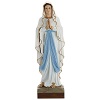
In the Holyart catalogue, you will find many reproductions of this exceptional work, in all materials, from Valgardena wood to fibreglass, to synthetic marble or marble dust, and with dimensions suitable for any type of environment.
Choose the most suitable for your home.
Michelangelo’s Pietà: description and style
The iconography of the Pietà was already widespread in the 15th century. Especially in Northern Europe the so-called Vesperbilder, “images of the Vespers”, wooden sculptures depicting the Virgin Mary with the dead body of Jesus in her arms, were widespread. They were objects of devotion especially in the liturgy of Good Friday, when the faithful recalled the pains of the Passion, identifying themselves with the sufferings of Mary and Jesus to find comfort in their own troubles.
Michelangelo was certainly inspired by the Vesperbilder, however revolutionising their structure, style and sentiment. Compared to the German works, which are very rigid and based on a sharp contrast between the reclining body of Christ and the erect body of the Virgin, in the Vatican Pietà the composition appears much softer, with a pyramidal structure that expresses stability on the one hand, and on the other suggests an upward movement of the figures, almost reaching towards the sky. Furthermore, the severe, gaunt forms of the Vesperbilder are replaced by the ideal beauty of the faces typical of the Renaissance, by the soft draperies, by the naturalness with which the bodies rest on each other, in an enveloping, moving way.
The body of Jesus is a little smaller than that of the Virgin, perhaps to commemorate the Savior’s childhood. On the other hand, Maria’s face is that of a teenager, a characteristic that made Michelangelo move some criticism. In reality, the artist’s choice was precisely to express the uncorrupted and incorruptible beauty of Mary, her imperishable youth, which makes her both mother and daughter of her own Holy Son. One of the most striking features of the Vatican Pieta is the smoothness of the marble, to which the artist seems to have devoted a very long time. Contemplating the face of Mary or the body of Christ it is difficult to believe that they are made of marble, so smooth and shiny they appear. In the past, this polishing meant that the statue was clearly visible even in the penumbra of the chapel.
How many Pietàs by Michelangelo are there?
The Vatican Pietà is not the only one sculpted by Michelangelo. Subsequently, he created two other sculptures (a third is of uncertain attribution) which take up this theme: the Pietà Bandini and the Pietà Rondinini.
The first was one of the last sculptures by Michelangelo, now seventy, perhaps destined for his own tomb.
The artist himself, in a moment of frustration, hit it by breaking it in several places and abandoning it. The second was his last job, to which he devoted himself with his last strength until shortly before his death. Although the artist was now in his eighties, this newly begun composition seemed destined to be highly innovative, with its revolutionary vertical development. Compared to the Vatican Pietà, in the Bandini Pietà, the marble is barely polished, while in the Rondanini Pietà it is sketched, almost rough.

